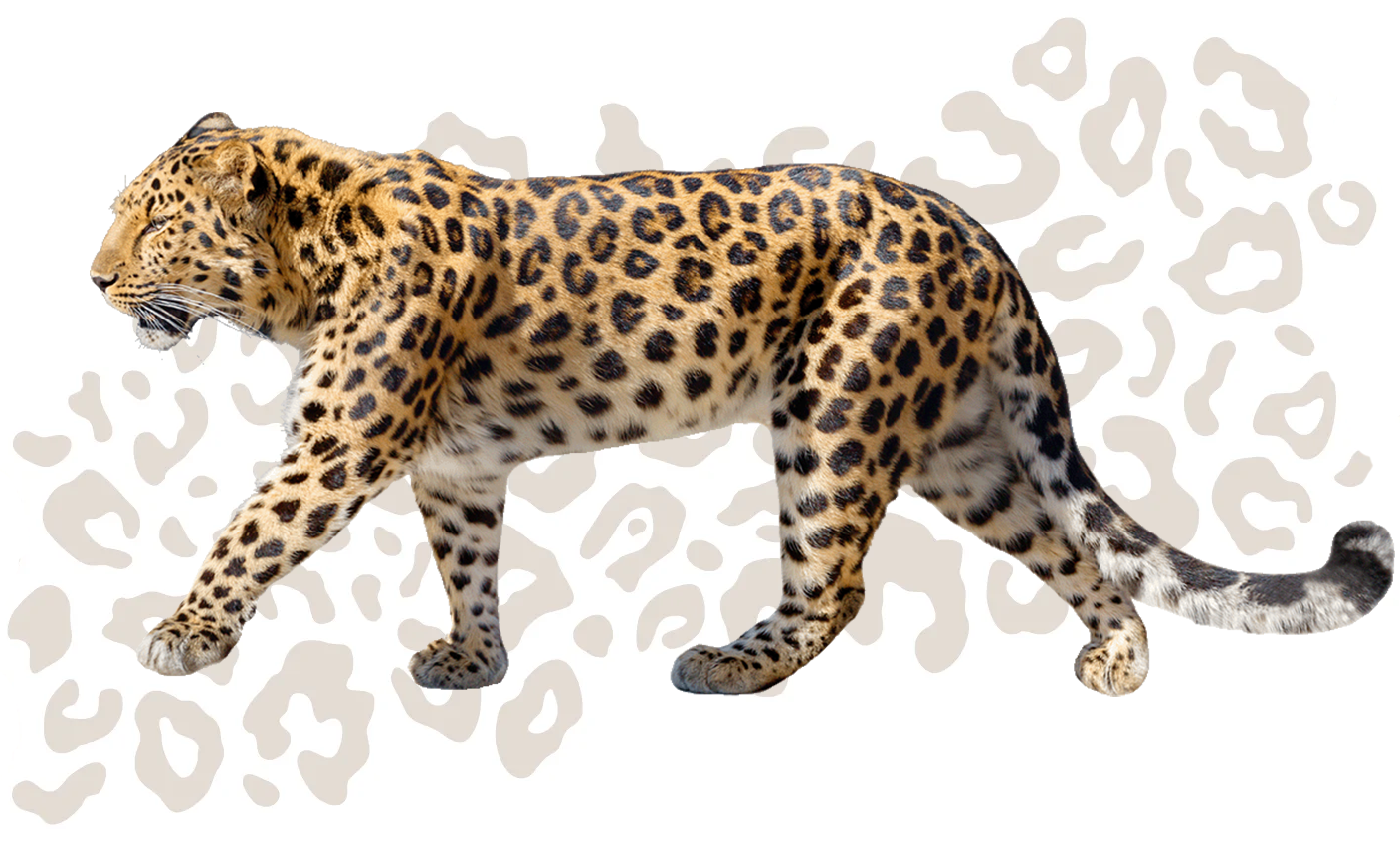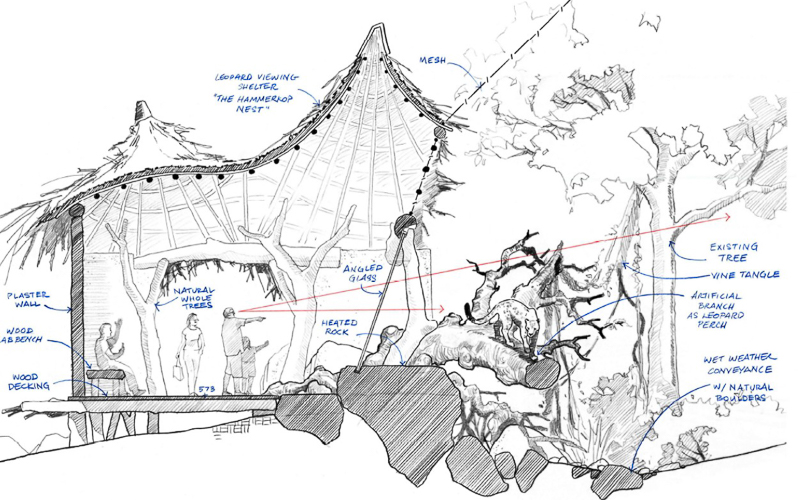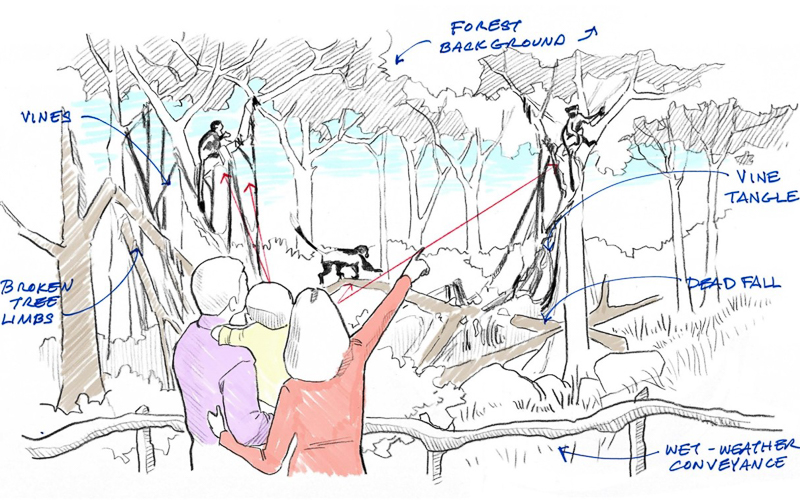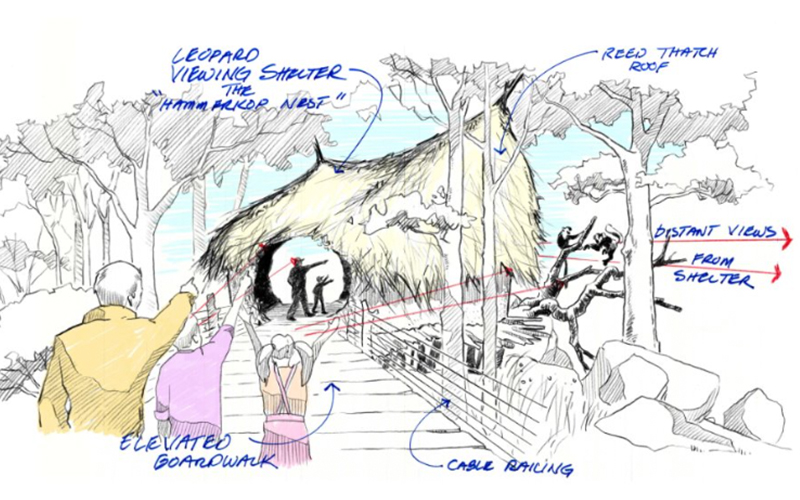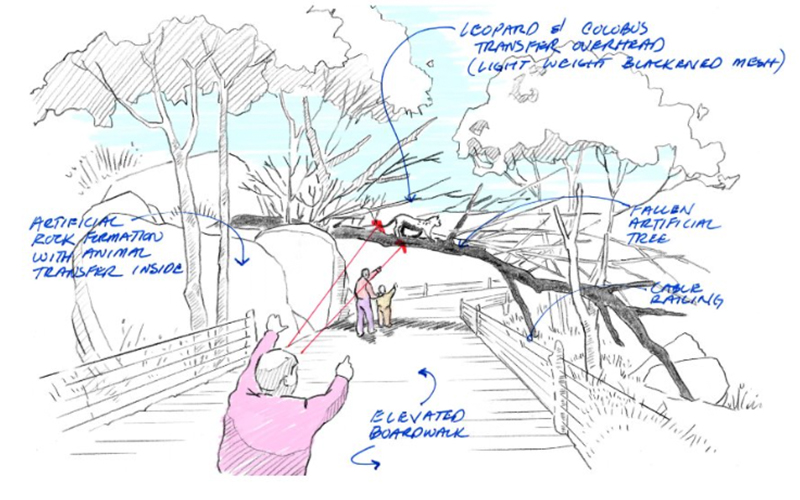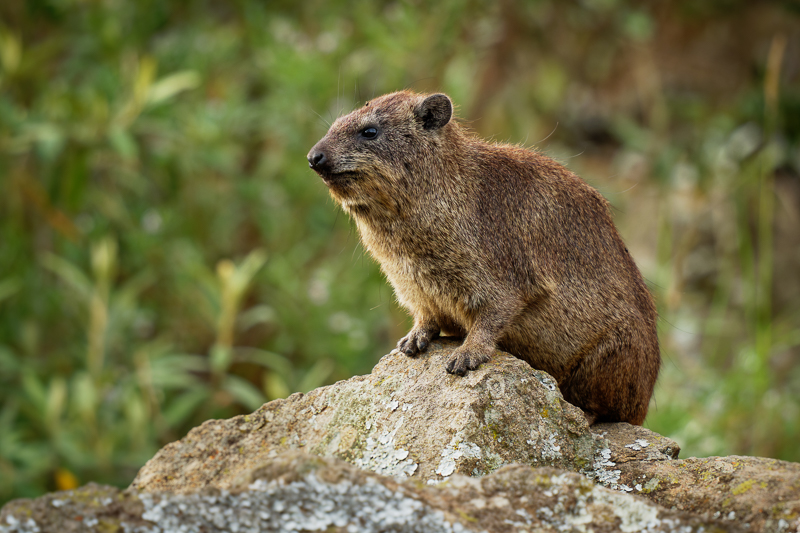Leopard Forest
Opens June 20
Leopard Forest, the newest and most immersive exhibit at Nashville Zoo, features four brand-new species and the return of our giraffes! Journey into the forest and come face to face with the world’s rarest big cat: the critically endangered Amur leopard.
Join us for a special ribbon-cutting ceremony at 9:30 am on June 20 as we celebrate the grand opening!
About the Exhibit
Leopard Forest was designed to offer an immersive experience for guests. The habitat features towering trees, including some weighing over 100,000 lbs, that were transported from other areas of the Zoo to recreate a forest environment. The exhibit's highlight is an overhead bridge, where leopards travel above visitors on their way to their outdoor habitat, offering an unforgettable view of these rare cats. The leopard-viewing building is designed to resemble the nest of an African hamerkop waterbird, blending seamlessly with the natural landscape.
The exhibit’s design incorporates elevated walkways that offer numerous viewing points for guests to observe the animals. Geometric steel sculptures by artist Matt Hill bring a modern touch to the environment and a serpentine donor wall, made of mosaic tiles by artist Rhoda Kahler, honors the generosity of those who made this project possible. The signage focuses on modern ecotourism and conservation efforts in Africa, with the theme "Living in Balance" to highlight the importance of protecting the delicate ecosystems these animals call home.
Meet the Residents

Amur leopard
At the heart of Leopard Forest is the Amur leopard, one of the world’s most endangered big cat species. Native to the Russian Far East and northeastern China, fewer than 150 Amur leopards remain in the wild today. These elusive cats face threats from habitat loss, poaching, and human conflict.
Amur leopards typically weigh around 80 pounds, about 30 pounds less than their African cousins. But don’t let their size fool you. They can take down prey up to three times their weight. Known for their thick golden coats and dark rosettes, these solitary hunters rely on stealth and power to catch deer, boar and other small mammals.
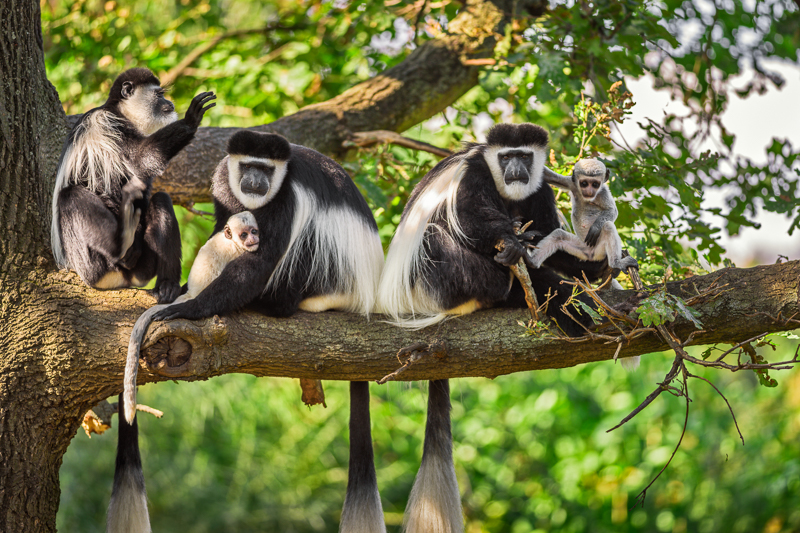
Colobus monkey
Black-and-white colobus monkeys are native to the forests of central and eastern Africa. These agile primates are known for their striking black-and-white fur and impressive leaping abilities.
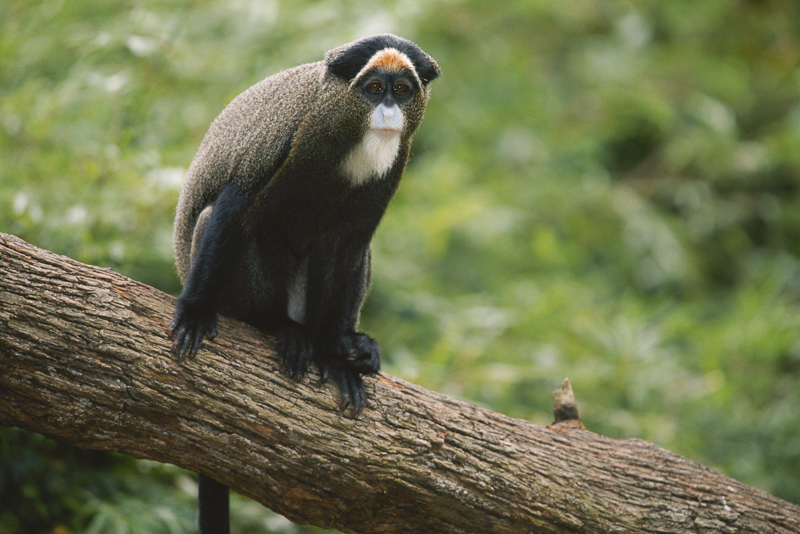
DeBrazza's monkey
DeBrazza's monkeys are found in the forests and wetlands of central Africa. These elusive monkeys are easily recognized by their white beards and orange crowns.
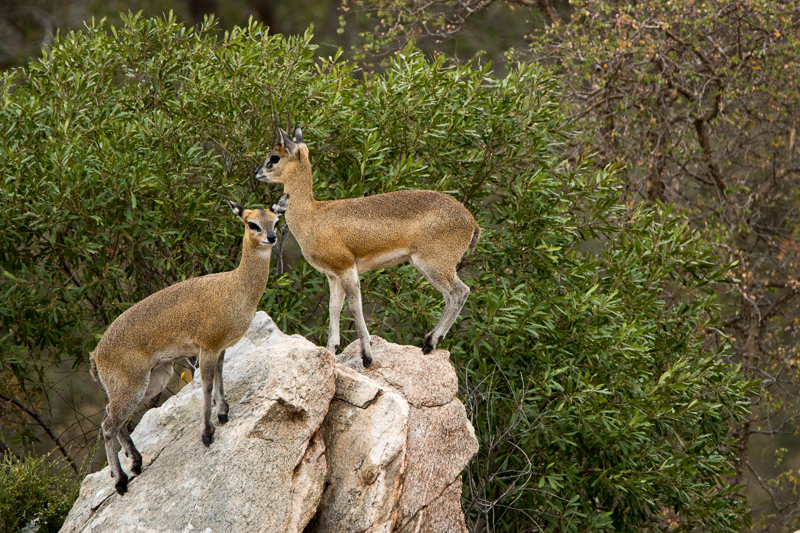
Klipspringer
Klipspringers are native to rocky outcrops in eastern and southern Africa. These nimble antelopes have specialized hooves that allow them to climb steep, rocky terrain.
Rock hyraxes
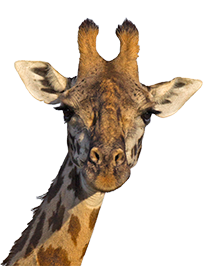
The Masai giraffes can be seen at the end of Leopard Forest, marking the completion of the exhibit and the return of our tower to public viewing!
Conservation Involvement
Leopard Forest creates conservation opportunities for more animals, allowing Nashville Zoo to expand its efforts in saving endangered species. The Amur leopards, colobus monkeys and DeBrazza's monkeys are on a Species Survival Plan, a program organized by the Association of Zoos and Aquariums to maintain a healthy and self-sustaining captive population that is genetically diverse and demographically stable. Additionally, Nashville Zoo will continue its commitment to protecting a diverse array of species across Africa. We support multiple conservation organizations working to safeguard wildlife and their habitats on the continent. These organizations include:
Save Giraffes Now
Save Giraffes Now works to protect giraffes in ten African countries through rewilding, rescue centers, anti-poaching efforts, and conservation research. They support all four giraffe species and collaborate with local communities to ensure their survival.
LEWA Wildlife Conservancy
Lewa Conservancy is located in Kenya and protects endangered species like black rhinos, Grevy's zebras, and elephants. The conservancy also invests in local communities through education, healthcare, and sustainable livelihoods, while using advanced anti-poaching techniques to safeguard wildlife.
GRACE Gorillas
Located in the Democratic Republic of Congo, GRACE focuses on caring for orphaned Grauer's gorillas and reintroducing them to the wild. They also promote gorilla conservation and habitat protection by working with local communities on sustainable livelihoods and fostering peaceful coexistence between humans and gorillas.
Okapi Conservation Project
The Okapi Conservation Project works to protect the endangered okapi and its rainforest habitat in the Democratic Republic of Congo. Through community education, sustainable agriculture, and local outreach, OCP helps reduce threats like deforestation and poaching while promoting conservation and alternative livelihoods.
International Rhino Foundation
The IRF works to ensure the survival of all five rhino species through strategic partnerships and protection efforts in Africa and Asia. They focus on combating poaching and habitat loss through initiatives like Rhino Protection Units and sanctuary programs. Their work also includes research and long-term investments in conservation.
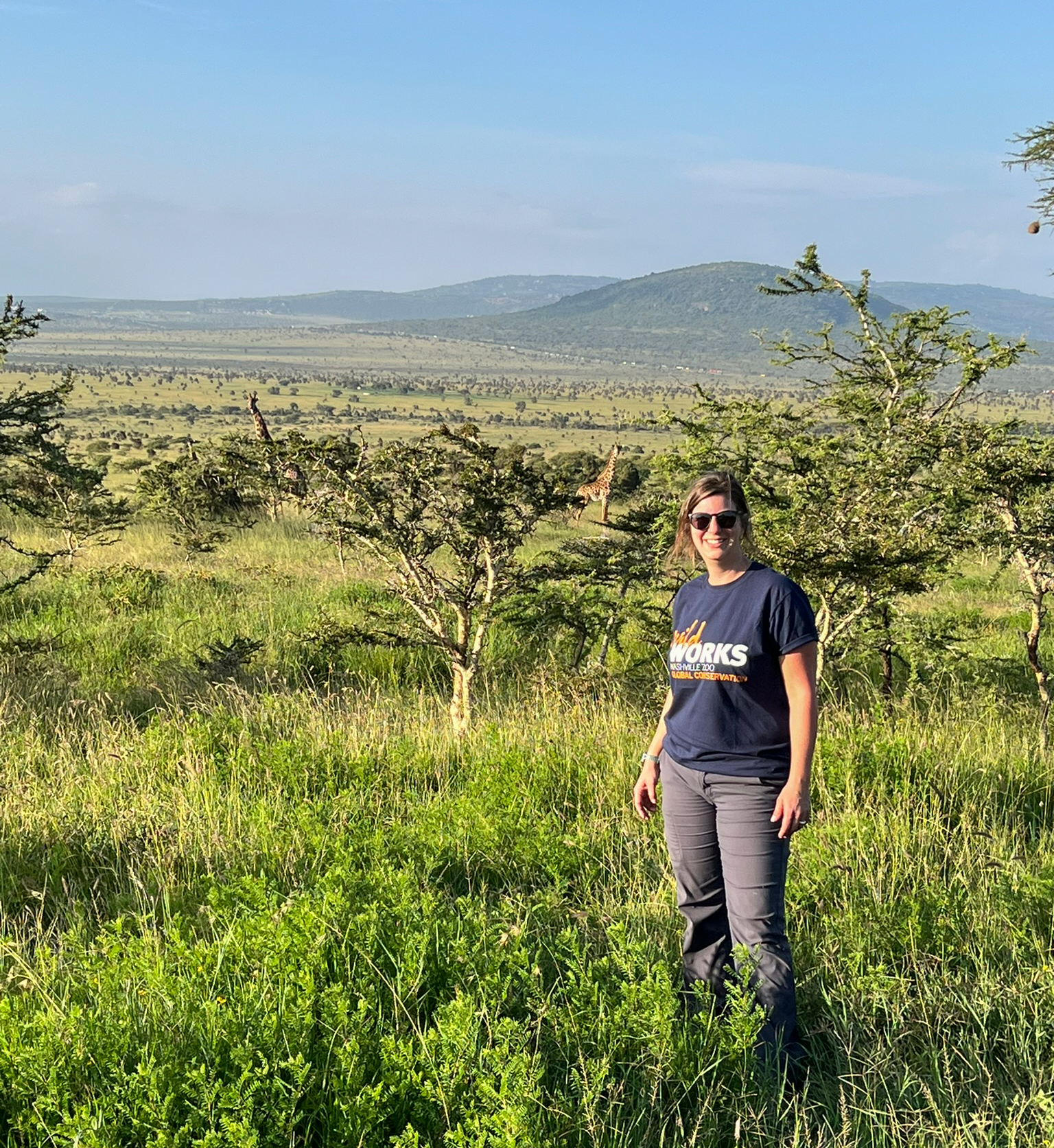
Thanks to the Generous Support of These Donors
David and Lucinda Baier, Dottie Frist, The Frist Foundation, The Reed Family, The Scarlett Family, Leah and Jim Sohr Family Foundation, Speer Foundation, State of Tennessee.
Samantha and Chris Boyd, Katie and Kevin Crumbo, The Hagood Family, Patricia and Rodes Hart, Jim and Sally Hunt, Reba and Rodgar McCalmon, Scott and Lyn Sohr, Julia Carell Stadler, Mary and Larry Wieck.
Clara and Wesley Belden, Ann and Frank Bumstead, The Fitzgibbon Family, Nancy and Ed Goodrich, H.G. Hill Realty Company, Diane and J.L. Holloway, Chris and Angie Howard, John Turner Lewis, Don and Erin Lindsey, Trish and Jim Munro, Mark, Trayte and Ren Peters, Janet and James Rooney, Faith Shertz.




